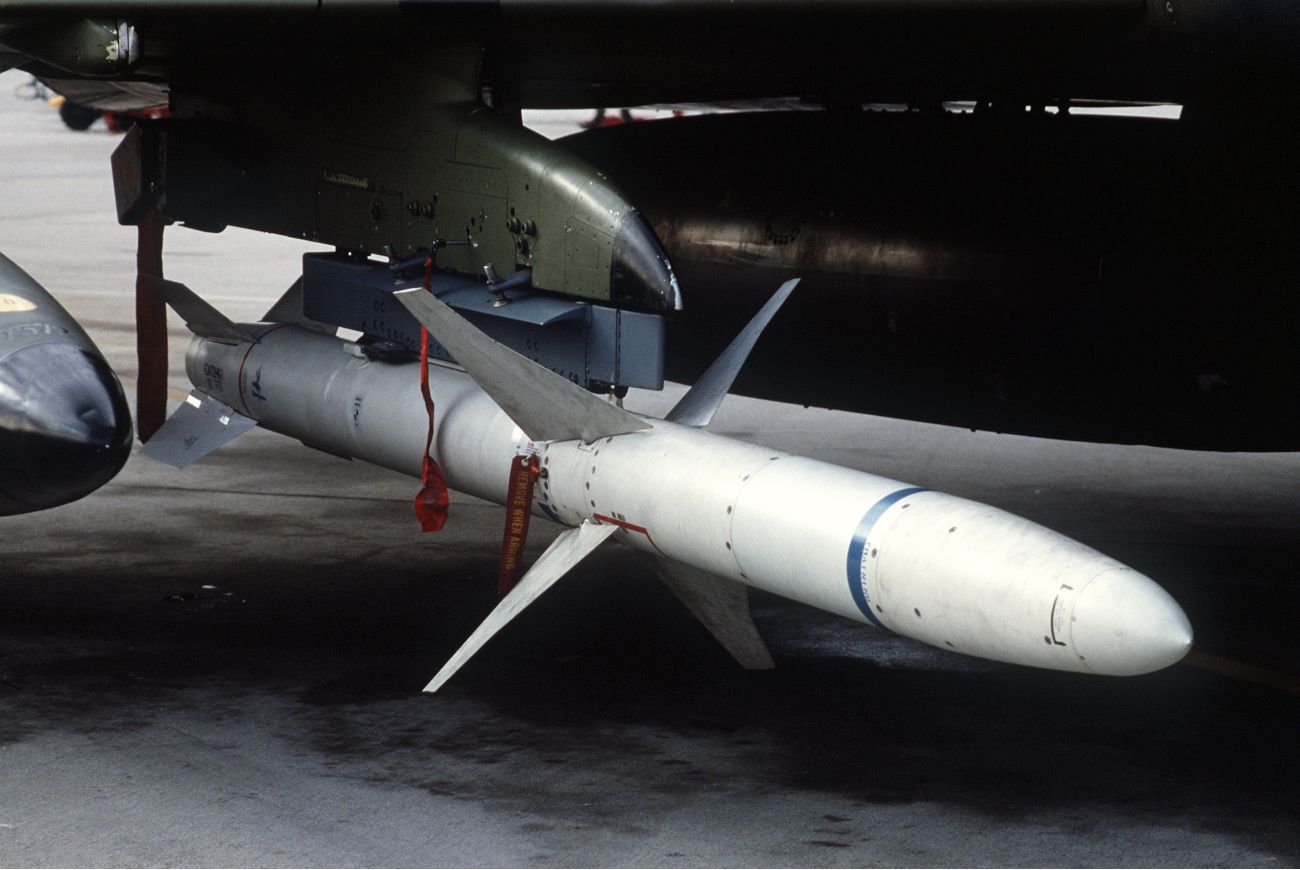On December 16, a video showing a Ukrainian MiG-29 jet launching two AGM-88 HARMs surfaced online, indicating that these missiles still play an important role in striking Russian defenses.
AGM-88 High-speed Anti-Radiation Missile (HARM) is a tactical air-to-surface anti-radiation missile targeted at high-frequency radars to locate and strike the target.
The fighter jet seems to be flying at a low altitude to avoid being spotted by Russian air defense systems. The video was filmed from the cockpit of a Ukrainian MiG-29 fighter, showing the plane launching two AGM-88 HARMs simultaneously.
It’s unclear what these rockets were aimed at, but MiG-29 jets have been actively participating in the war’s campaign to hit Russian assets. The specific location of the launch of the AGM-88 HARM missiles is also unknown.
A Ukrainian Mig-29 launches a pair of US-supplied and integrated AGM-88 HARM air-to-surface anti-radiation missiles. pic.twitter.com/V7lDCyGNWN
— OSINTtechnical (@Osinttechnical) December 16, 2022
Nevertheless, it’s estimated that more than 100 AGM-88 HARMs have been launched since the Ukrainian Armed Forces acquired them. According to reports, the Russian military quickly learned the characteristics of these supersonic air defense killers and began intercepting them successfully.
In August 2022, the US government confirmed that it had supplied these missiles to Ukraine. The confirmation sparked concerns over whether Western ammunition would work with Ukraine’s ex-Soviet aircraft fleet.
Physical modifications would be required to modify such aircraft, but that is not the most challenging aspect of launching HARM missiles from Soviet aircraft hardpoint pylons. A data link must be established between the pilot and the munition to transfer information about possible targets’ positions and characteristics.
However, NATO has expertise in adapting Soviet-era aircraft to improve their compatibility with NATO hardware. For instance, Poland and Slovakia modernized their MiG-29 aircraft to better comply with NATO requirements.
Ukraine has also shown that it can modify and employ Western weaponry in ways that were not designed. For example, Brimstone missiles meant to be launched from aircraft have been seen being fired from modified trucks.

With US assistance, Kyiv added these missiles to its military aircraft. The Russian Air Force (VKS), although having a significant qualitative and quantitative advantage, has not been able to secure air superiority in Ukraine.
Meanwhile, Slovakia, a member of NATO, is reportedly considering sending MiG-29 aircraft to Ukraine. This is not the first time Slovakia has offered its aging fighters to Kyiv. The Slovaks offered to donate the four-decade-old MiGs in the spring, during the early stages of Russia’s invasion of Ukraine.
Before the war, Ukraine had about 45 MiG-29 aircraft. The Ukrainians have been able to keep their existing jets and restore a few airframes in storage—including ones that had previously served as exhibition jets—to flight status thanks to consistent deliveries of spare parts, most likely from Poland.
That being said, although the twin-engine, supersonic MiG-29s are the most powerful and possibly most adaptable aircraft in the Ukrainian air force, their fleet is diminishing.
AGM-88 High-Speed Anti-Radiation Missile
The AGM-88 HARM is a supersonic air-to-surface anti-radiation missile that entered service in 1985 and has since been upgraded several times. The missile’s primary mission is to destroy enemy radar systems used by counter-artillery batteries or surface-to-air missiles.
While missiles like the AGM-88 need to be connected to the aircraft from which they are fired, they can function when necessary with minimum aircraft or pilot input.
The AGM-88 needs a little direction from the pilots to locate and engage in combat with a target. The missile’s nose houses the seeker head and fixed antenna of the proportional guiding system, which focuses on hostile radar waves.

As a result, they were quickly modified for use on Ukrainian MiG-29s and Su-27s during the conflict with Russia that broke out in February 2022. A smokeless, dual-thrust solid rocket motor propels the missile.
HARMs are sometimes fired into enemy airspace with no specific targets in mind. When air defense systems are activated, missiles in flight may identify the radar signals they emit and modify their trajectory to engage them.
Even if the system is turned off again, the AGM-88 can still use GPS guidance to reach the target’s last known location.
However, if air defense system commanders know that HARMs or aircraft hauling them are close, they may keep their systems down. It would allow aircraft to operate freely in the conflict zone.
- Contact the author at ashishmichel(at)gmail.com
- Follow EurAsian Times on Google News




